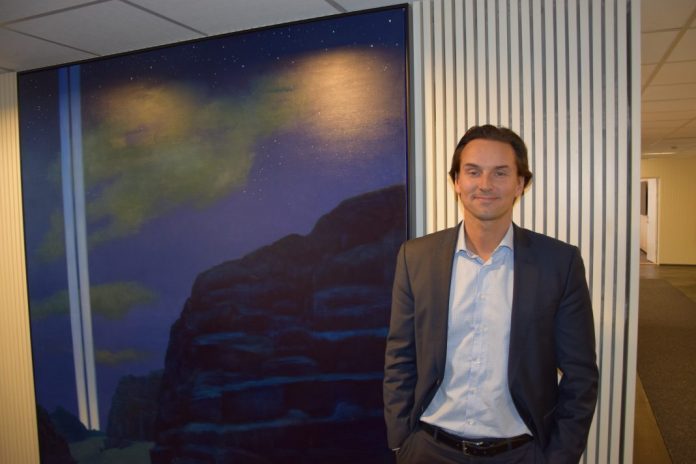Analyst Alexander Aukner believes there are 200,000 tonnes of untapped potential capacity for farming in Norway and that it is not the authorities that hold back growth.
In the Bjørvika district in Oslo, Norway, lies the offices of DNB markets. Here, up to 300 employees sit together in the 2,200 square meter brokerage hall. No one has less than three screens. Most have six, in two rows of three screens stacked on top of each other.
This is seafood analyst Alexander Aukner home away from home. He has seen a fantastic 2018 for the aquaculture come and go. Now as we approach the end of the year, he looks forward to 2019.
“We believe the production problems have bottomed out and that it will be progressively better from now on. It is an interesting mindset that, despite a lot of investment in smolt capacity, processing capacity and new equipment, utilisation per maximum allowed biomass (MAB) is worse than it was in 2012,” said Aukner to SalmonBusiness.
Since then, MAB has increased steadily, but harvesting volumes have remained fairly stable, according to Aukner.
“Should Norway go back to 2012 levels when looking at production per ton of MAB, then it’s nearly 200,000 tonnes of unused potential in Norway as we see it,” he said.
- Read more: ABG Sundal Collier “We are confident that the industry is less cyclical than it has been”
Think of volume growth between six and seven percent
However, Aukner does not think the problems with biology are something that is necessarily solvable, at least not in the short term.
“It’s naive to believe that all problems with biology and lice will disappear in 2019, but we belive in a gradual improvement in 2019 and 2020,” he says.
Aukner reports that DNB believes in global volume growth in the aquaculture industry of up to seven percent for several years to come. Both in 2019, 2020 and 2021.
“We are grateful that we see improvement in the biology and that there are more fish in the sea. Six percent growth is probably enough to satisfy the demand that is in the market. Which means we will not get a higher price, but a stable price in the future,” he added.
Irony in the fish farming sector
If the problems with the biology are solved, Aukner believes that there will be a decline in both the salmon price and the stock prices.
“In the short term, if you solve biology issues, it will immediately increase production by ten percent. First the price goes down witch in turn makes the stock prices go down. Here is the irony in the sector. If we look at the history, all the biological problems and challenges in the industry have been positive for stock price development,” said Aukner.
“So, if you solve the problems, you will immediately get a negative reaction on the shares, until people realize this is a positive,” explained Aukner.
“You get growth, cheaper growth and you can reach new markets. In addition, the options are less attractive. Which again means that the geographical monopoly one has today may last longer. For each year you can not solve the problems, you only accelerate the process of alternative production methods and regions and accelerate the downturn you get,” said Aukner.
Demand must be overcome positively again
DNB Markets has a price estimate of 6,4€/kg in both 2019 and 2020. This makes them well below some of its competitors. Pareto Securities and Handelsbanken Capital Markets who both believe in record prices in 2019.
“The expectations for the price are quite high and it gives a small margin of safety. Demand must once again overcome positively in order to meet the expectations in the market now,” said Aukner.
DNB Markets’s last report is called “Final Stage of an Eight Year Bullrun”, describing the end of what has been a crazy long period of high-return and super-profit.
“The cost of traditional growth is increasing, and new regions become more competitive. An example of it is land-based facilities that were completely inaccessible just five years ago. It is now a reality. When the volumes come and where the volumes come, it remains to be seen,” says Aukner, asking:
“But what has to happen to make us more positive? It had to be that companies solve the biological challenges, gained growth so that you lower the price, you will also get down the cost and probably the price of a license. Then you would have an industry and a product that is cheap, in growth and sustainabilty.
Predictable increase for land-based farming
Planned capacity for land-based facilities in the world today is about 350,000 tonnes. Doubling in just two years.
“And I think this growth will only continue. On paper, the economy of land-based farms looks like its going to work and be very attractive. It is lower investment cost, same production cost and has a large freight advantage,” said Aukner.
At the request of SalmonBusiness to come up with a brave prediction for 2019, he predicts that the planned capacity by the end of 2019 will be 500,000 tonnes.


